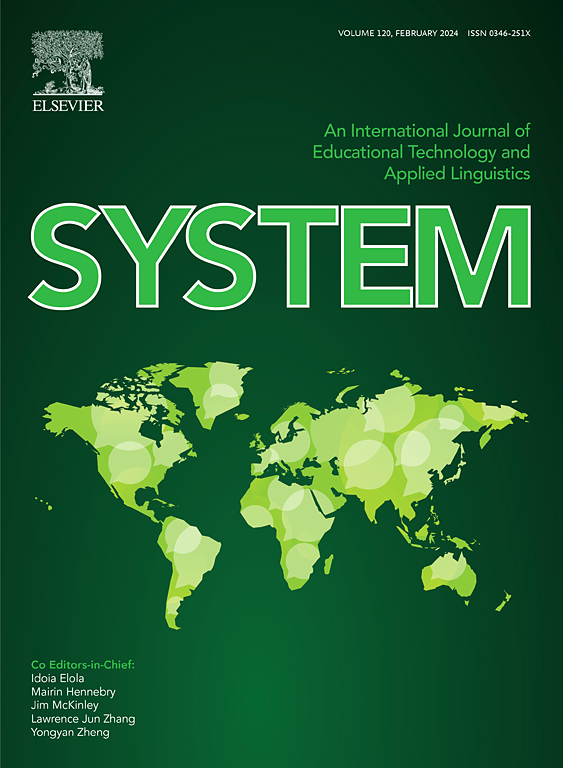Exploring the effects of task sequencing on L2 oral performance from the perspective of the SSARC model
IF 5.6
1区 文学
Q1 EDUCATION & EDUCATIONAL RESEARCH
引用次数: 0
Abstract
Task sequencing in Task-Based Language Teaching has gained increasing attention in the realm of L2 acquisition. But little research has been done on the role of task sequencing in L2 oral performance within the framework of the SSARC model. Thus, this study investigated the effects of task sequencing manipulated from both resource-directing (±number of elements) and resource-dispersing (±planning time) dimensions on L2 oral performance. Ninety-nine Chinese EFL participants were assigned to three groups: simple-to-complex (StC), complex-to-simple (CtS), and task repetition (TR). the Mann-Whitney U test and MANOVA analysis were conducted on the data of pretest, treatment and post-test tasks, and revealed the following results: 1) CtS sequence resulted in better complexity and accuracy of L2 oral performance than StC sequence, but StC sequence produced better fluency than its counterpart; 2) both StC and CtS sequences enhanced syntactic complexity compared with TR, while TR promoted lexical complexity and fluency; 3) both sequences and task repetition induced moderate learning in syntactic and lexical complexity and fluency, while CtS sequence brought about a slight improvement in accuracy. These findings shed new light on the role of task sequencing in promoting L2 oral learning.
从SSARC模型的角度探讨任务排序对二语口语表现的影响
任务型语言教学中的任务顺序在二语习得领域受到越来越多的关注。但在SSARC模型的框架内,关于任务排序在二语口语表现中的作用的研究很少。因此,本研究从资源导向(±要素数量)和资源分散(±计划时间)两个维度考察任务排序对二语口语表现的影响。99名中国学生被分为三组:从简单到复杂(StC)、从复杂到简单(CtS)和任务重复(TR)。对测试前、测试处理和测试后任务数据进行Mann-Whitney U检验和方差分析,结果显示:1)CtS序列比StC序列提高了二语口语表现的复杂性和准确性,但StC序列比StC序列提高了二语口语表达的流畅性;2)与TR序列相比,StC序列和CtS序列均提高了句法复杂度,而TR序列提高了词汇复杂度和流利度;3)序列和任务重复在句法和词汇的复杂性和流畅性方面都有中等程度的学习,而ct序列在准确性方面有轻微的提高。这些发现为任务排序在促进二语口语学习中的作用提供了新的视角。
本文章由计算机程序翻译,如有差异,请以英文原文为准。
求助全文
约1分钟内获得全文
求助全文
来源期刊

System
Multiple-
CiteScore
8.80
自引率
8.30%
发文量
202
审稿时长
64 days
期刊介绍:
This international journal is devoted to the applications of educational technology and applied linguistics to problems of foreign language teaching and learning. Attention is paid to all languages and to problems associated with the study and teaching of English as a second or foreign language. The journal serves as a vehicle of expression for colleagues in developing countries. System prefers its contributors to provide articles which have a sound theoretical base with a visible practical application which can be generalized. The review section may take up works of a more theoretical nature to broaden the background.
 求助内容:
求助内容: 应助结果提醒方式:
应助结果提醒方式:


